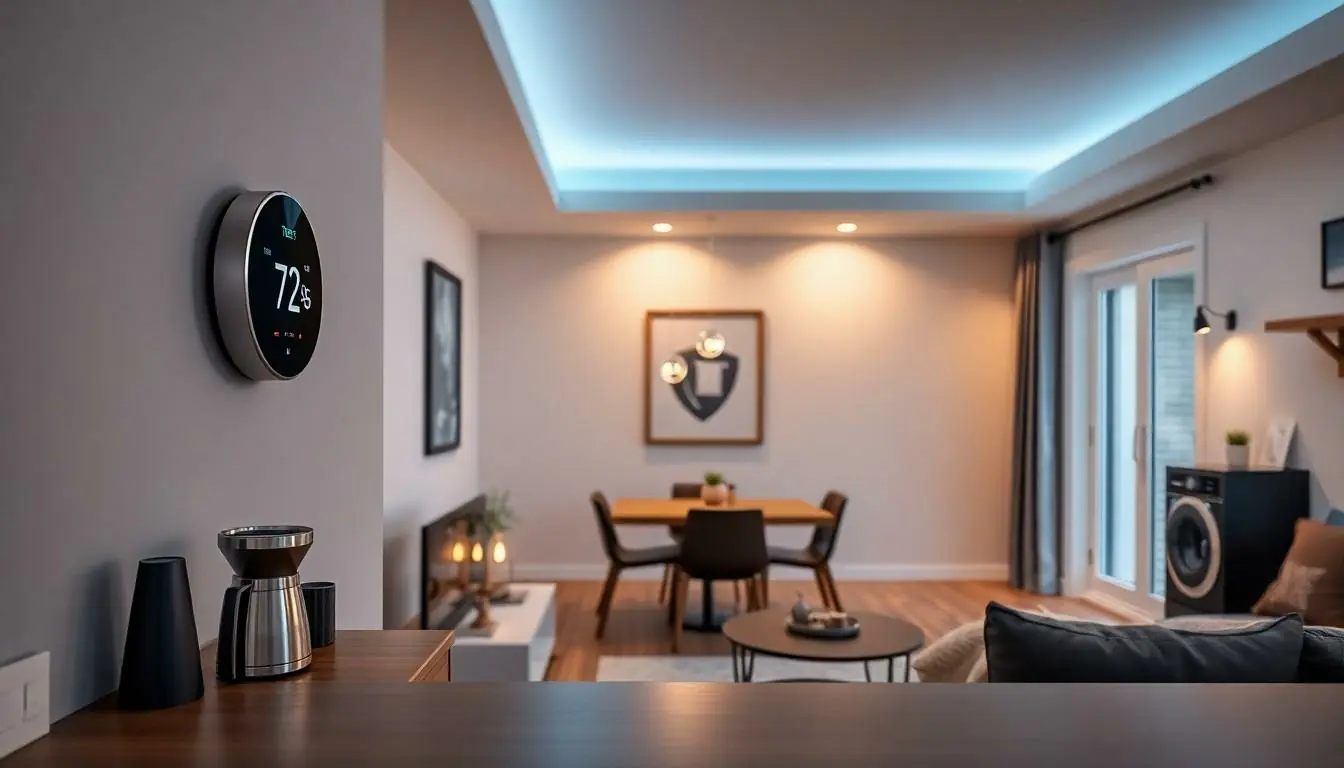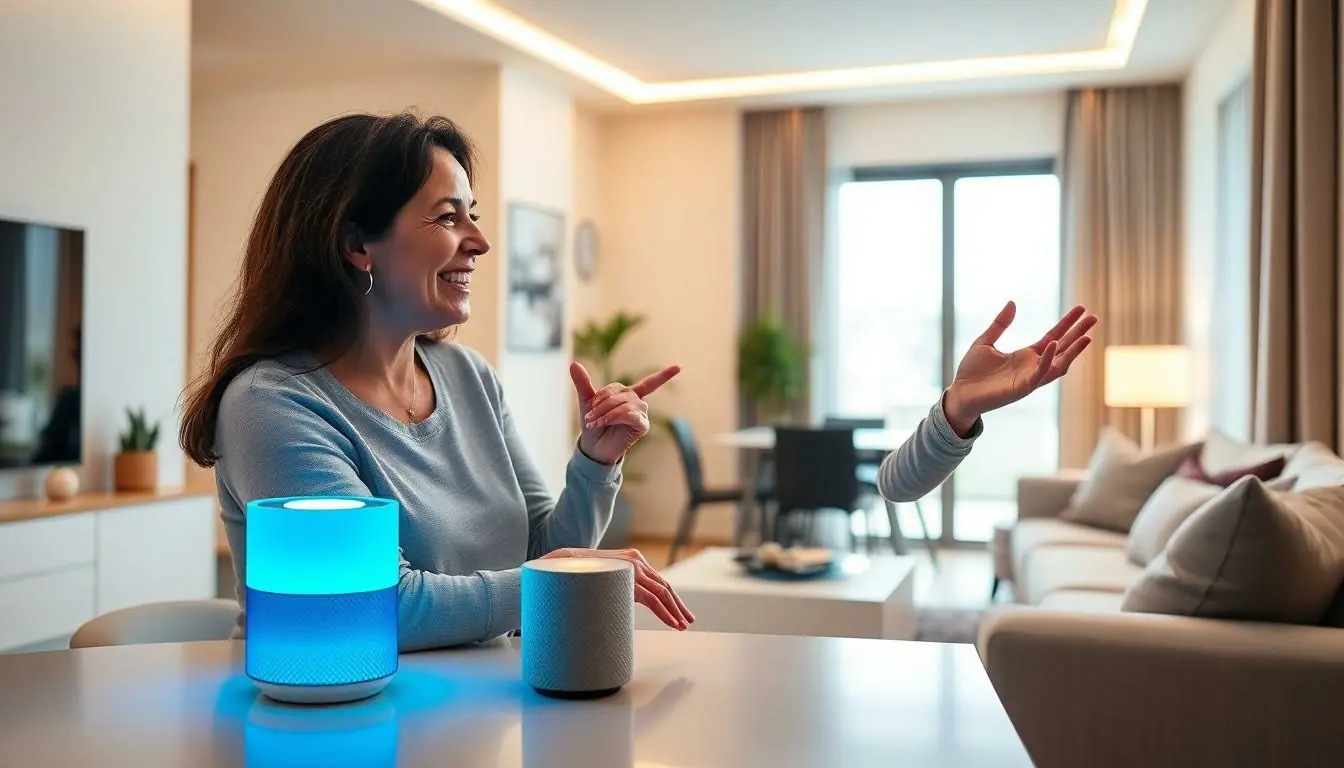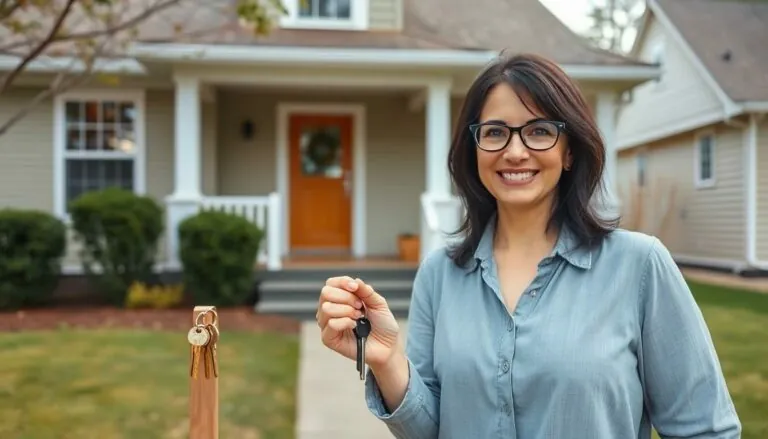Imagine walking into your home and having it greet you like an old friend—lights flick on, your favorite playlist starts, and the coffee brews itself. Sounds like magic, right? Well, it’s not. It’s the power of home assistant automation, turning everyday living into a tech-savvy dream.
Table of Contents
ToggleOverview of Home Assistant Automation
Home assistant automation streamlines daily tasks, creating a more efficient living environment. This technology enables systems to communicate, making homes responsive to actions or conditions. For instance, lights can automatically turn on when someone enters a room. Temperature adjustments occur based on the time of day or occupancy.
Integration with various devices enhances home automation. Smart locks provide secure entry, while surveillance cameras offer peace of mind. Scheduling features allow homeowners to automate appliances, such as setting coffee makers to brew each morning. Voice commands link devices, adding a layer of convenience when multi-tasking.
Energy management becomes simpler through automation. Systems monitor energy consumption, adjusting settings to reduce costs. Smart thermostats can lower heating or cooling when no one is home, significantly saving on energy bills. Notifications alert users to unusual patterns, promoting proactive energy savings.
Enhanced security also benefits from home assistant automation. Automated routines can simulate presence, deterring potential intruders. For instance, smart lights can mimic occupant behavior by turning on or off at varied intervals.
Customization options allow users to tailor their automation experiences. Different scenes can be created for activities like watching films or hosting gatherings, adjusting lighting and sound systems to match the ambiance. Integration with third-party applications enriches functionality, making it easy to manage everything from entertainment to daily chores.
The possibilities with home assistant automation are extensive. Each setup caters to individual preferences, enhancing comfort and convenience within smart homes.
Benefits of Home Assistant Automation

Home assistant automation offers numerous advantages, enhancing the overall living experience. It transforms daily routines into seamless interactions with technology.
Increased Convenience
Automation provides significant convenience in daily tasks. Systems respond automatically to user presence, such as turning on lights upon entering a room. Individuals can schedule coffee machines to brew at specific times, ensuring a fresh cup is ready in the morning. Moreover, smart locks allow keyless entry, simplifying access for family and guests. Automated reminders can help manage chores or appointments, reducing missed commitments. Overall, the ease of integration across devices creates a more fluid lifestyle, minimizing the effort required to complete everyday activities.
Energy Efficiency
Energy efficiency stands out as a key benefit of home automation. Smart thermostats actively monitor temperature and adjust settings based on occupancy patterns. Systems optimize energy consumption by dimming lights during the day or turning them off when no one is present. Homeowners can track energy usage through smart devices, identifying areas for improvement. Such strategies contribute to reduced utility costs. By automating irrigation systems, water consumption also decreases, promoting environmentally friendly practices. Ultimately, these measures not only save money but support sustainability goals within modern households.
Popular Home Assistant Automation Examples
Home assistant automation examples showcase the transformative impact of smart technology in daily living.
Smart Lighting Solutions
Smart lighting enhances ambiance and energy efficiency. Homeowners can automate lights to turn on or off based on the time of day, occupancy, or sunset and sunrise schedules. Certain systems allow users to preset illumination levels for different activities, such as reading or entertaining. Voice commands via smart assistants further streamline lighting control. Additionally, motion sensors trigger lighting, ensuring safety and convenience in dark spaces. Automated schedules align lighting with routines, promoting energy savings while providing comfort and enhanced aesthetics.
Climate Control Automation
Climate control automation delivers personalized comfort with minimal effort. Smart thermostats enable temperature adjustments based on occupancy patterns and local weather intelligence. Homeowners can create automated schedules that optimize heating and cooling based on daily routines, providing energy efficiency and comfort. Ventilation systems can communicate with thermostats, ensuring consistent air quality throughout the home. Some systems allow remote adjustments via mobile apps, offering flexibility for users on the go. Integrating climate control with other smart devices enhances overall energy management, contributing to a sustainable lifestyle.
Home Security Enhancements
Home security enhancements create a safer living environment. Automated locks provide remote access control, allowing authorized users to enter without traditional keys. Surveillance cameras equipped with motion detection alert homeowners of unusual activity. Automated routines simulate presence during vacations, deterring potential intruders. Integration with smart doorbells enables real-time video feeds and two-way audio communication. Users can receive notifications and access live streams via mobile devices. Enhanced visibility around the property ensures peace of mind, contributing to an overall secure home atmosphere.
Setting Up Home Assistant Automations
Setting up home assistant automation enhances daily living significantly. With the right equipment and software, individuals can create an efficient smart home environment.
Required Equipment and Software
Smart home automation requires specific tools to function properly. Home assistant software, available for free, acts as the central hub for managing devices. Compatible devices include smart lights, smart thermostats, and smart locks. Users must ensure their devices support standard protocols like Zigbee or Z-Wave. A reliable Wi-Fi connection is crucial for device communication and responsiveness in automation settings. High-speed internet enhances device performance and provides seamless control.
Step-by-Step Automation Process
Creating automation involves a clear process that anyone can follow. Start by identifying tasks to automate, such as lighting or climate control. Next, access the home assistant interface and navigate to the automation section. Setting triggers is essential; these can be device states, time schedules, or geofencing features. After establishing triggers, define the actions that should occur in response. Actions can include turning on lights, adjusting thermostats, or sending notifications. Finally, testing the automation ensures everything functions correctly before regular use.
Best Practices for Home Assistant Automation
Efficient home assistant automation requires careful planning. Identify specific tasks to automate before implementing any changes. Focus on the most repetitive or time-consuming tasks that significantly enhance daily life, such as automating lights or controlling temperature settings.
Select devices that are compatible with standard protocols like Zigbee or Z-Wave for seamless integration. Reliable devices ensure communication between systems and smoother operation. Prioritize energy-efficient devices that monitor consumption to reduce utility costs while promoting eco-friendliness.
Create user-friendly automations that anyone in the household can understand. Simplifying configurations contributes to a better user experience. Test each automation comprehensively to identify any potential issues before relying on them for daily use.
Schedule automation routines during peak times for maximum benefit. For instance, set lighting schedules according to sunset times or adjust thermostat settings just before arriving home. This ensures comfortable conditions with minimal manual adjustments.
Include security features in automation schemes to enhance safety. Utilize smart locks and surveillance systems to create a secure environment that alerts homeowners of unusual activities. Simulating presence through automation deters intruders effectively.
Regularly revisit automation settings to adapt to changing preferences or new devices. A home automation system should evolve with its user’s needs, allowing for updates and new features as technology advances. Embracing flexibility fosters a personalized experience that aligns with shifting lifestyles.
Utilize third-party applications for added functionality. Integrating these applications can provide new insights and capabilities, enriching the overall smart home experience. Optimize system performance by monitoring connected devices and adjusting settings based on usage data.
Home assistant automation offers a wealth of opportunities to enhance daily living. By integrating various smart devices, homeowners can create a personalized environment that adapts to their needs. The convenience of automated lighting, climate control, and security systems not only simplifies routines but also promotes energy efficiency.
With careful planning and the right tools, anyone can transform their home into a smart haven. Regular updates and user-friendly automations ensure that the system remains effective and enjoyable for all household members. As technology continues to evolve, the potential for home automation will only expand, making it an exciting journey for those looking to elevate their living experience.




